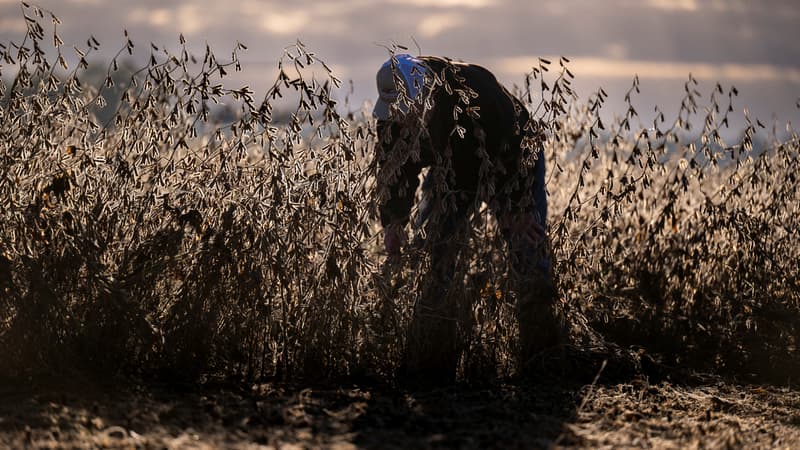Concern is growing among American soybean producers, in the middle of the harvest season: trade tensions between Washington and Beijing are gradually closing their access to the world’s largest market.
They are among the first victims of the trade war launched by President Donald Trump, faced with a drop in Chinese purchases. To respond to US customs tariffs, Beijing has applied a 20% surcharge to a series of products, including soybeans, which makes them “infinitely more expensive” than those produced in Latin America, according to the American Soybean Association (ASA).
This increase in prices worries Travis Hutchison, a farmer in Maryland, in the eastern United States. Although he expects a good harvest this year, he is not sure if he will make enough income from it. This 54-year-old farmer grows mainly soybeans and corn with his family on a farm of just over 1,375 hectares. “I was not against the president trying” to pressure the Chinese government, he says, “because we needed better trade agreements.” But “I was hoping it would take less time.”
A drop in prices
Like many American farmers, who mostly voted for Donald Trump almost a year ago, he is trying to survive the impasse between the two countries. Exports to China, which accounted for half of the $24.5 billion in U.S. soybean exports, fell by half in a year. Prices have fallen 40% in three years. And it could get worse: Argentina recently suspended its taxes on soybean exports, making it more competitive in the eyes of Chinese importers.
To support American producers, Donald Trump assured that part of the revenue from customs duties will be redistributed among them, without giving details. At the same time, in the face of restrictions on rare earth exports decided by Beijing, the US president announced that he wanted to impose 100% additional customs duties on Chinese products and questioned his meeting with Xi.
Travis Hutchison believes that the aid promised by Donald Trump is, at best, a “band-aid.” “I’m glad you think of us,” he says, but a trade deal is more important because “we’ve been farmers for a long time.” China’s soybean purchase normally takes place between October and January, says David Burrier, a farmer in the region. “This year is going to be very, very difficult,” he anticipates, “40% of our production will be sold, in the best of cases, at cost price.”
“Everything costs more”
The situation is worrying in the central states of the country, which generally send their production to the western coast. From there it is transported to China, explains ASA chief economist Scott Gerlt. But the silos are already full and farmers in this region cannot find a commercial outlet. A situation worse than that of 2018, during the first trade war between Beijing and Washington, insists Scott Gerlt, during which American farmers lost $27 billion in exports. The government, already under the command of Donald Trump, then granted aid of 23 billion dollars to the profession.
But this time, the tensions come at a difficult time for the sector, warns Scott Gerlt, which faces an increase in the prices of its inputs due to the effect of customs duties desired by Donald Trump, while income from its production falls. “Everything costs more because of customs duties, especially parts to repair farm machinery,” added Travis Hutchison, concerned about the impact on his farm’s bottom line.
Farm bankruptcies have increased 50% since 2024, according to data compiled by Iowa State University professor Chad Hart.
Source: BFM TV


